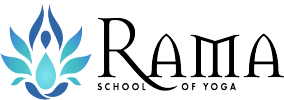200hr Ashtanga Vinyasa Teacher Training
Note: We will teach both Ashtanga Vinyasa and Hatha Yoga during the TTC.
The Ashtanga Vinyasa Yoga Teacher Training Course (TTC) is limited to 14 people and it is offered by a team of experienced teachers. This is a comprehensive Yoga Instructor training program, designed in accordance with the 200 Hour requirements for registration with Yoga Alliance. After successfully completing the course you will be a Certified Yoga Instructor, eligible to register with Yoga Alliance and you will be qualified to teach Ashtanga Vinyasa Yoga worldwide.
All the modules taught meet and exceed yoga alliance requirements. Our comprehensive course schedule includes Asanas, Asanas Methodology (Adjustments & Theory), Pranayama and Meditation, Yoga Philosophy, Anatomy, Ayurveda and more.
Theme of the Course
The theme of the teacher training is Ashtanga Vinyasa flow. The course is a fusion between the set sequence of the Ashtanga Primary Series as derived from the ancient text Yoga Korunta and the creative flows and sequences of ‘breath synchronized movement’ found in the Vinyasa Flow style of asana practice. Students will be taught the Ashtanga Primary series in order to develop a solid foundation of asana and alignment practice on which to draw from in developing and sequencing a Vinyasa Flow class, where various other asana will also be incorporated. In these styles, asana are practiced in a sequence in a dynamic and flowing style using breath, drishti (gaze) and bandhas (energy locks). By the end of the course students will be able to teach Ashtanga primary series and also create their own Vinyasa Flow sequences.
The Syllabus
The Eight Limbs of Yoga
- Yama – ethical disciplines
- Niyama – self obser
- Asana – posture
- pranayama – breath control
- Pratyahara – sense withdrawal
- Dharana – concentration
- Dhyana – meditation
- Samadhi – a state of joy and peace
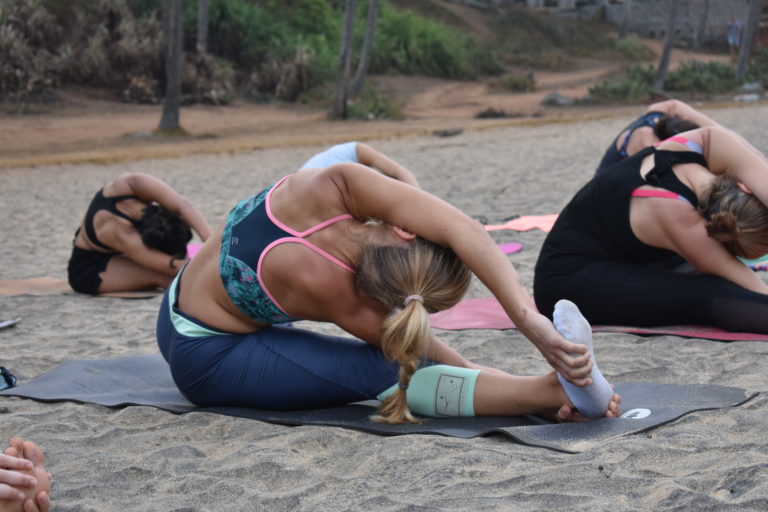
Ashtanga Yoga
- Introductions and history
- The elements of Ashtanga yoga: Vinyasa (breath-synchronised motion), Ujjayi Pranayama (victorious breathing), bandhas (inner locks), dristis (gaze points)
- Primary series: Sun salutations, standing series, seated series, finishing sequence
- Jamb backs and jump throughs,
- Drop backs
- Students will practice primary series every morning three to five times in a week
Teaching methodology and technique
- Principles of demonstration,
- Observing, assisting and correcting,
- Instruction, teaching styles, qualities of a teacher,
- Voice projection, floor presence
- The student’s process of learning
- Planning and structuring a class
- Alignment and hands-on-adjustment
- Dealing with injuries and safety precautions
- Business aspects of teaching yoga.
Primary series
- Samasthiti
- Surya Namaskara A
- Surya Namaskara B
- Standing Postures
- Padangushtasana
- Padahastasana
- Utthita Trikonasana
- Parivritta Trikonasana
- Utthita Parshvakonasana
- Parivritta Parshvakonasana
- Prasarita Padottanasana A
- Prasarita Padottanasana B
- Prasarita Padottanasana C
- Prasarita Padottanasana D
- Parshvottanasana
- Utthita Hasta Padangushtasana
- Ardha Baddha Padmottanasana
- Utkatanasana
- Virabhadrasana (A & B)
- Sitting Postures
- Dandasana
- Paschimattanasana
- Purvatanasana
- Ardha Baddha Padma Paschimattanasana
- Tiriangmukhaikapada Paschimattanasana
- Janu Shirshasana A
- Janu Shirshasana B
- Janu Shirshasana C
- Marichyasana A
- Marichyasana B
- Marichyasana C
- Marichyasana D
- Navasana
- Bhujapidasana
- Kurmasana
- Supta Kurmasana
- Garbha Pindasana
- Kukkutasana
- Baddha Konasana
- Upavishta Konasana
- Supta Konasana
- Supta Padangushtasana
- Ubhaya Padangushtasana
- Urdhva Mukha Paschimattanasana
- Setu Bandhasana
- Finishing Postures
- Urdhva Dhanurasana
- Paschimattanasana
- Sarvangasana
- Halasana
- Karnapidasana
- Urdhva Padmasana
- Pindasana
- Matsyasana
- Uttana Padasana
- Shirshasana
- Baddha Padmasana
- Padmasana
- Uth Pluthi
- Savasana
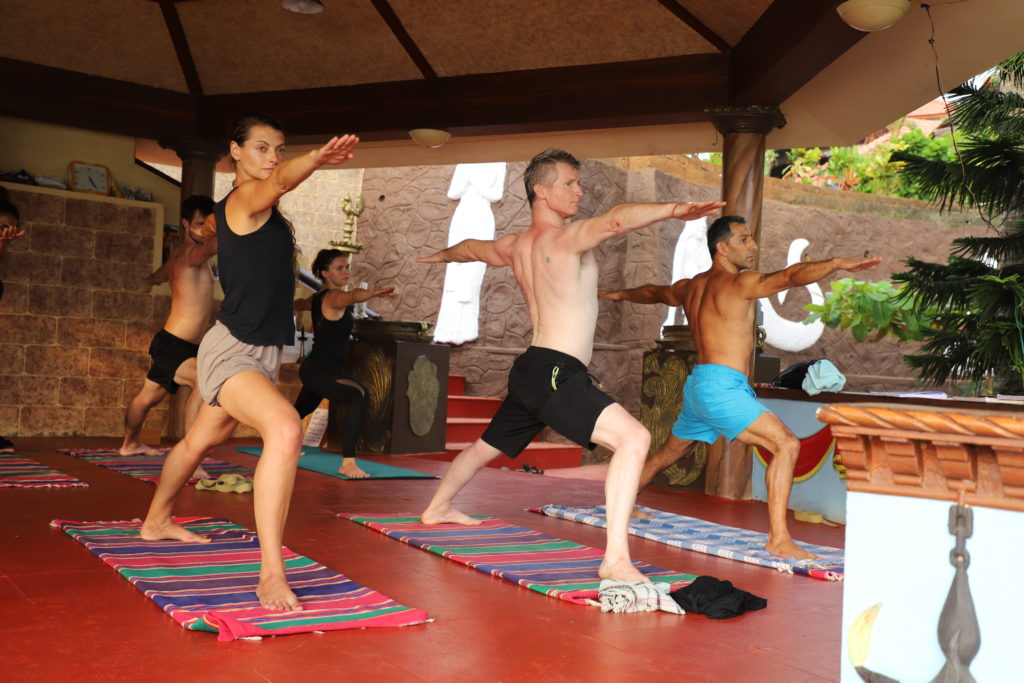
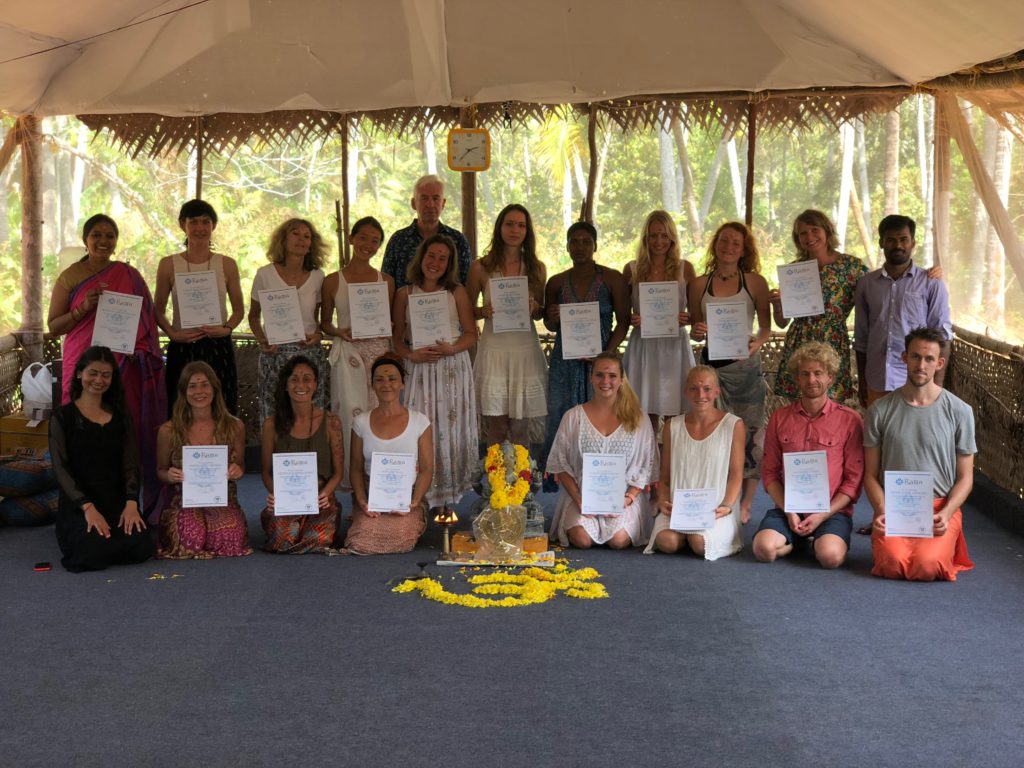
Pranayam
- The Mechanics of Breathing
- Four Aspects of Pranayama
- Introducing the practitioner to his natural breath
- Abdominal Breathing
- Thoracic Breathing
- Clavicular Breathing
- Full Yogic Breath
- Nadi Shodhana
- Bramhari
- Bastrika
- Kapalabhati
- Sheetali & Sheetkari
- Ujjayi
Mudras (Yoga in your hands)
- Namaskar mudra
- Chin Mudra
- Jnana Mudra
- Shambavi Mudra
- Nasikagra Mudra
- bhairava mudra
Yoga Philosophy
- Definition of Yoga
- Discipline of Yoga
- Witnessing The essence of Yoga
- Five modifications of the mind
- Foundations of yoga
- Practice-Abhyasa
- Non-Attachment-Vairagya
- Eight limbs of Yoga
Babdha
- Moola,
- Uddhyana
- Jalandhara
- Maha Bandha.
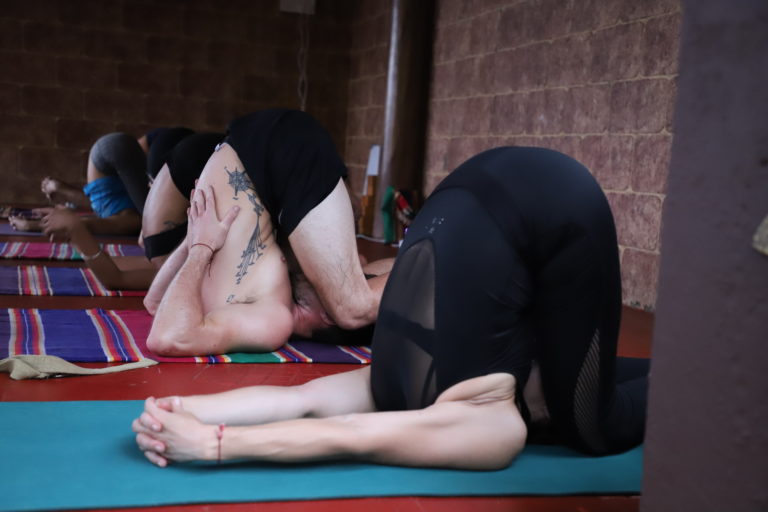
The Yogic Diet
- Food
- Relationship between food and our emotions
- TYPES OF DIET
- Sattvic
- Tamasic
- Rajasic
- Yoga and vegetarianism
Yogic Anatomy
- Cardiovascular System
- Respiratory System
- Endocrine System
- Digestive System
- Musculoskeletal System
Recommended books for reading :
- Yoga Mala – Sri Pattabhi Jois.
- Light on Yoga – BKS Iyengar.
- Asana, pranayama, Mudra, Bandha – Swami Satyananda Saraswati.
- Learn more about Pranayamas, Patanjali Sutras, Bhagavad Gita, vedas, upanishads and Yoga Anatomy
Sample Schedule [Monday to Friday]
| 06:00 – 08:00 | Hatha Yoga Asana Practice and Pranayama |
| 08:00 – 10:30 | Breakfast & Break |
| 10:30 – 13:00 | Asanas Theory, Teaching Methodology, Art of Adjustment and Yoga Anatomy |
| 13:00 – 15:00 | Lunch & Break |
| 15:00 – 16:30 | Yoga Philosophy |
| 16:30 – 17:00 | Tea Break |
| 17:00 – 18:30 | Astanga Vinyasa Practice |
| 19:00 – 19:30 | Meditation |
| 20:00 – 20:30 | Dinner |
| 22:00 | Light Off |
NOTE:
Saturday – class will be till 13:00pm
Sunday – Holiday
